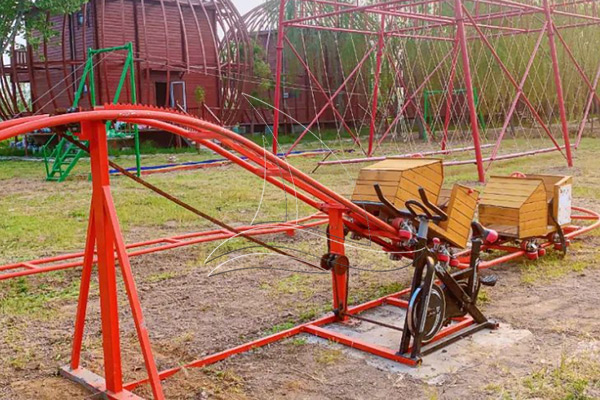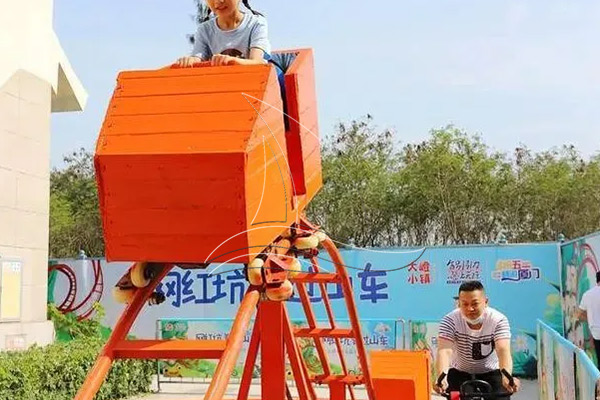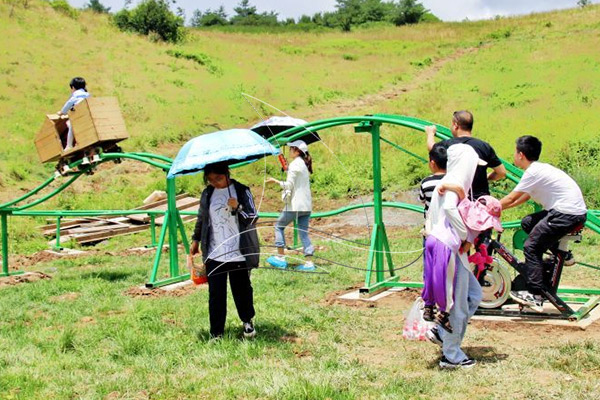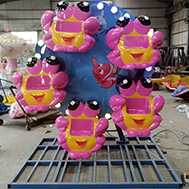How does parent powered roller coaster work? Maybe we know about this a little. Parent powered roller coaster, we can also call it pedal-powered backyard roller coaster, or unpowered pedal roller coaster amusement ride. It mainly depends on human power to run like non-powered small pendulum ride. Originally, it is invented by a Chinese father in his backyard for his daughter. By building it, he hopes to improve the relationship between parents and children.
The entire equipment combines the characteristics of traditional bicycles and unpowered roller coasters. The entire cockpit of the roller coaster is operated by the father or mother pedaling the bicycle. The child sits in the cockpit equipped with a safety belt and slowly rises from the lowest point to the highest point. In this process, if the child wants to reach the highest point quickly, it requires the father to exert force quickly and speed up the bicycle to meet the child’s request. It usually takes 2 minutes of effort to pedal the bicycle.
After the roller coaster reaches the highest point, it will rely on its own inertia to slide down. At this time, the father does not need to pedal a bicycle. The length of the entire track is approximately 15m-50m. Therefore, it is very suitable for backyards, playgrounds, parent-child parks. However, before we understand how it works, we need to understand its structure.
The structure of a parent powered roller coaster

A roller coaster usually consists of tracks, columns, carriages, and chain drives. Children’s cabins are equipped with safety bars, seat belts, and safety handrails. The equipment equipped includes safety guardrails, preparation areas and guidance areas to ensure the safety of children while playing. It does not require any electricity, has a simple structure and is easy to operate. The material of track is stainless steel, and has a long service life. Of course, we can also provide free customized service.
How does parent powered roller coaster work
Pedal power: Similar to a bicycle, an unpowered human-powered pedal roller coaster relies on the passenger’s leg strength to step on the pedals to drive the vehicle forward. This power is usually transmitted to the wheels through chains or belts, allowing the vehicle to move on the track.
Starting phase: Passengers use pedal power to propel the vehicle to the starting point of the track, or in some designs pedal power may be required to overcome the initial uphill slope.
Gravity phase
Gravity assist: Similar to a traditional unpowered roller coaster, once the vehicle is pushed to a certain height, it can rely on gravity to slide down. In this process, the vehicle’s potential energy (energy associated with height) is converted into kinetic energy (energy while moving).
Have a Summary
In summary, the working principle of the unpowered human pedal roller coaster is to combine human pedals and gravity assistance, using the physical strength of the passengers and the track design to realize the movement and stopping of the vehicle on the track. This kind of roller coaster not only provides an entertainment experience, but also allows passengers to get some physical exercise.





